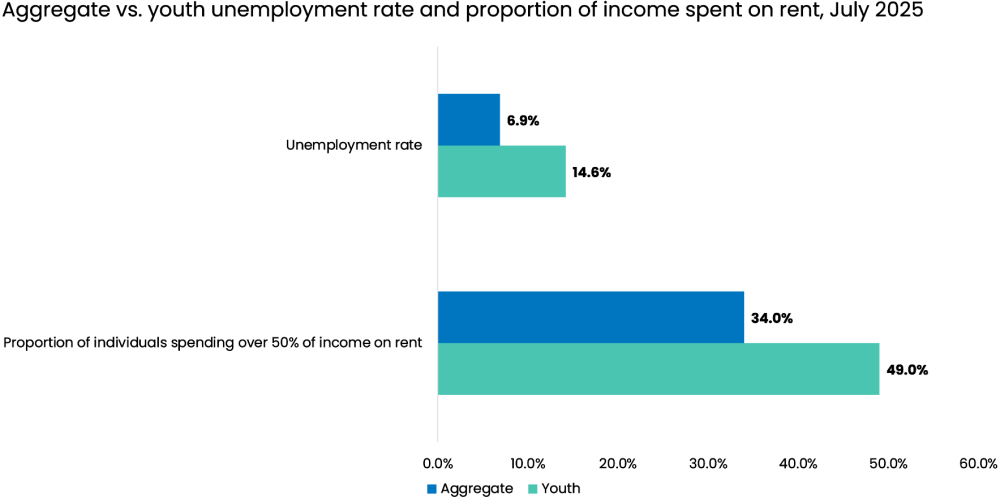Young people in Canada – those aged 15 to 24 – are facing a tough time in the economy. Summer jobs and internships, once reliable stepping stones into the workforce, are becoming harder to land. These roles have traditionally offered more than just a paycheck, they’ve helped build networks, sharpen skills and kickstart careers. But today, many youth are hitting a wall. Even for those lucky enough to secure work, the financial strain is intense. A staggering portion of their income, nearly half, is going to rent. That’s not just a budgeting challenge; it’s a major red flag for affordability. Such spending patterns leave little room for saving, investing in education or covering basic needs – making it tougher for young people to get ahead. We were keen to take a closer look at the nuances of this challenge, and here’s what we found:
- In July, youth unemployment totalled 14.6 per cent, the highest rate since 2010 (excluding the pandemic years of 2020 and 2021). That’s a jump of 4.3 per cent from the same time last year and 2.8 per cent from June.
- Overall employment in Canada remained flat at 6.9 per cent in July.
- 49 per cent of young people are spending nearly half of their after-tax income on rent – far above the recommended 30 per cent. The average rate is 34 per cent for all Canadians.
- Sectors that typically hire young workers – like retail, hospitality, construction and information/culture – have been hit hard. Construction and information alone shed a combined 51,000 jobs.
- For students returning to high school or university after the summer, the situation is more dire; unemployment in this group reached 17.4 per cent in July.
- Provincially, Alberta had the highest youth unemployment in July of 20.3 per cent, followed by Ontario at 16 per cent.
Several factors are contributing to this youth unemployment and affordability crunch:
- A mismatch between the number of young people entering the workforce and jobs available.
- Economic uncertainty has led businesses to maintain or reduce the number of workers hired.
- AI and automation are eliminating entry level jobs (usually filled by young workers) while leaving high-skilled positions intact.
As a result, young people are struggling to get responses to job applications, let alone interviews. The lack of income and experience is not just a short-term setback – it could have long-term consequences. Research shows that unemployment during youth can lead to “scarring effects” – such as lower future earnings and slower skill development. And when young people are forced to spend more than half their income on rent, they’re likely cutting back on essentials to stay afloat. This isn’t a youth issue – it’s an economic one. If young Canadians can’t find work, it affects their prospects and the country’s long-term productivity. It’s crucial for policymakers to prioritize this challenge and explore targeted solutions that support youth employment, affordability and career development.







